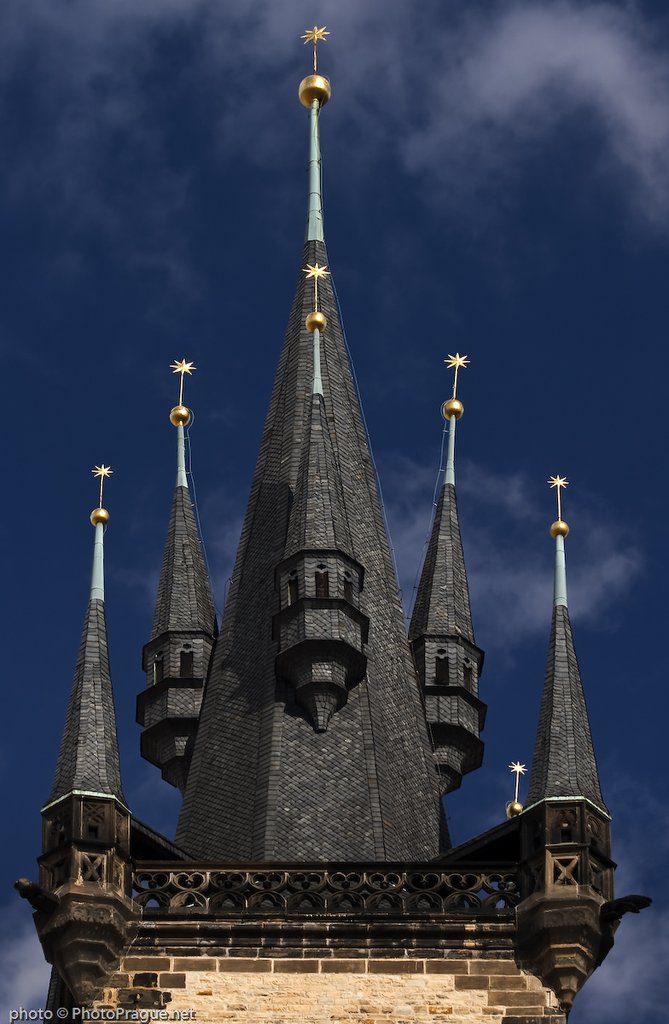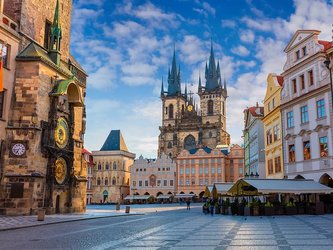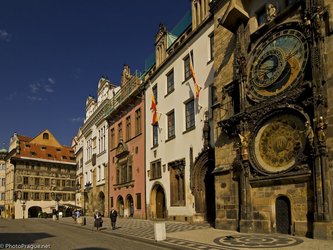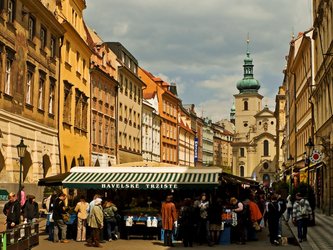The sacred centre of the Old Town...
The Church of Our Lady before Týn is among the most beautiful Gothic buildings in Prague. It is the largest and most notable church in the area and has always been considered the heart of the Old Town – the symbolic importance of this monument greatly exceeded its role as simply another parish church. The cathedral was built in the second half of the 14th century on the site of an older structure, which predestined its relationship to the square. In front of the older church, there stood houses on the square, so the facade of the new cathedral had to be built behind them. However, the results of this setback were magnificent. The houses create a backdrop for the church: the towers behind them rush and shoot up towards the heavens with a certain effect of surprise.
Today, you can access the church through a corridor discreetly hidden under a Gothic arcade of the building overlooking the square. The main portal of the church, however, is positioned on its side, facing the narrow Týn Street. The bas-relief adorning the tympanum is testimony to the importance of the building and the wealth of burghers and merchants who provided their auspices for its construction. Its exceptional quality is perhaps comparable only to the outstanding output of the court circles in Paris or Burgundy.
In the 15th century, the church became the main place of worship of the Hussite movement, and it remained so until 1621. Till that date, the facade was also adorned with a golden chalice, the Hussite symbol. In 2017, the chalice was returned, as a gesture of ecumenical reconciliation.
The interior of the church underwent a Baroque renovation following a 17th century fire. However, these renovations did not diminish the exceptional atmosphere of the place. The power of this sacred place of worship is further enhanced by the sheer number of artistic objects stretching across all the periods of its construction: the Gothic period is represented by a remarkable late Gothic canopy built at the turn of the 15th century by Matěj Rejsek, who was also the author of the nearby Powder Tower. The dawn of the Renaissance is represented through an impressive altar depicting the baptism of Christ, and whose author only left the initials I.P. From the Baroque era, it is no doubt the central altar, with a canvas by Karel Škréta dating from the mid-seventeenth century which stands out.








